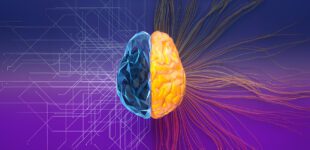October 24, 2024
Generative AI took the world by storm in recent years after several chatbots, like ChatGPT, entered the public domain. The chatbots generated human-like text with a speed that seemed almost magical – writing sonnets in the style of Shakespeare, translating texts between numerous languages, churning out computer code and so much more.
Businesses and business pundits saw the potential benefits immediately. But recent months have seen small but growing doubts about generative AI. Detractors say generative AI’s capabilities have been overhyped. Hallucinations – false statements that generative AI models can make – decrease its usefulness, and many businesses have yet to find an ideal strategy to use these tools. And though ChatGPT is one of the fastest-growing applications of all time, the proportion of people who say they use it regularly remains fairly rare.
In “The Impact of Technology in 2025 and Beyond: an IEEE Global Study,” a recent survey of global technology leaders, 91 percent of respondents agreed that “in 2025 there will be a generative AI reckoning as public fascination and perception shift into a greater understanding of and expectations for what the technology can and should do — in terms of accuracy of results, transparency around deepfakes and more.”
But the survey doesn’t anticipate a lasting stumbling block for generative AI. A sizeable majority (91%) also agreed that “generative AI innovation, exploration and adoption will continue at lightning speed in 2025.”
So, what’s in store for generative AI in 2025? What’s the product roadmap, and what impact will they have on how we work and live?
More Multimodal Capabilities
IEEE Senior Member Daozhuang Lin expects generative AI models to make it easier to provide images and videos from short text snippets in the coming years. Text-to-image, text-to-video and speech synthesis will improve, and models will achieve better contextual understanding across diverse inputs.
“The first step is the deep integration of multi-modal to create more complex, detailed, accurate and self-consistent content for consumers and even professional content creators,” Lin said.
Cleaning Up Accuracy and Bias
Concerns over hallucinations, accuracy and bias have also slowed the adoption of generative AI models. Bias may creep in when the models are trained on biased data. Some image-generating models may show a preference for people of a certain race.
“The developers of the model need to focus on how to remove the bias and ethical issues generated by AI in the process of consumer data training,” Lin said. “It’s important to guide users to more universal and long-lasting values and to guide the model to become more ‘kind’.”
Improved Context Window
One limitation generative AI models face is the amount of information they can process at one time in a prompt. This is referred to as the context window or context size. Imagine, for example, that you need to input a very long prompt – or description – in an attempt to generate an image. At some point, the generative AI model will not be able to process the entire prompt. The output will only reflect a portion of the prompt, omitting potentially important information.
In another scenario, you may need to have a conversation with the model about a long document. As the conversation progresses, the model may forget earlier parts of the conversation.
Improving the context window would allow generative AI models to handle more complex tasks, and improve the coherence of their responses.
“The limit of what we can do with generative AI has yet to be reached; we are not at the plateau of this technology,” said Hector Azpurua, an IEEE Graduate Student Member.
Learn More: Artificial intelligence could have a huge impact on the way we access goods and services, such as online shopping, streaming, gaming, e-learning, telemedicine and social media. The IEEE Standards Association has established the Artificial Intelligence in Digital Consumption Initiative to help organizations manage the full lifecycle of artificial intelligence in digital consumption.





 Meaningful Momentum or Running in Place?
Meaningful Momentum or Running in Place? AI Through Our Ages
AI Through Our Ages Liquid Infrastructure: Our Planet's Most Precious Resource
Liquid Infrastructure: Our Planet's Most Precious Resource The Impact of Technology in 2025
The Impact of Technology in 2025 Quantum and AI: Safeguards or Threats to Cybersecurity?
Quantum and AI: Safeguards or Threats to Cybersecurity? Why AI Can't Live Without Us
Why AI Can't Live Without Us Bits, Bytes, Buildings and Bridges: Digital-Driven Infrastructure
Bits, Bytes, Buildings and Bridges: Digital-Driven Infrastructure Impact of Technology in 2024
Impact of Technology in 2024 Emerging AI Cybersecurity Challenges and Solutions
Emerging AI Cybersecurity Challenges and Solutions The Skies are Unlimited
The Skies are Unlimited Smart Cities 2030: How Tech is Reshaping Urbanscapes
Smart Cities 2030: How Tech is Reshaping Urbanscapes Impact of Technology 2023
Impact of Technology 2023 Cybersecurity for Life-Changing Innovations
Cybersecurity for Life-Changing Innovations Smarter Wearables Healthier Life
Smarter Wearables Healthier Life Infrastructure In Motion
Infrastructure In Motion The Impact of Tech in 2022 and Beyond
The Impact of Tech in 2022 and Beyond Cybersecurity, Technology and Protecting Our World
Cybersecurity, Technology and Protecting Our World How Technology Helps us Understand Our Health and Wellness
How Technology Helps us Understand Our Health and Wellness The Resilience of Humanity
The Resilience of Humanity Harnessing and Sustaining our Natural Resources
Harnessing and Sustaining our Natural Resources Creating Healthy Spaces Through Technology
Creating Healthy Spaces Through Technology Exceptional Infrastructure Challenges, Technology and Humanity
Exceptional Infrastructure Challenges, Technology and Humanity The Global Impact of IEEE's 802 Standards
The Global Impact of IEEE's 802 Standards Scenes of our Cyber Lives: The Security Threats and Technology Solutions Protecting Us
Scenes of our Cyber Lives: The Security Threats and Technology Solutions Protecting Us How Millennial Parents are Embracing Health and Wellness Technologies for Their Generation Alpha Kids
How Millennial Parents are Embracing Health and Wellness Technologies for Their Generation Alpha Kids Space Exploration, Technology and Our Lives
Space Exploration, Technology and Our Lives Global Innovation and the Environment
Global Innovation and the Environment How Technology, Privacy and Security are Changing Each Other (And Us)
How Technology, Privacy and Security are Changing Each Other (And Us) Find us in booth 31506, LVCC South Hall 3 and experience the Technology Moon Walk
Find us in booth 31506, LVCC South Hall 3 and experience the Technology Moon Walk Virtual and Mixed Reality
Virtual and Mixed Reality How Robots are Improving our Health
How Robots are Improving our Health IEEE Experts and the Robots They are Teaching
IEEE Experts and the Robots They are Teaching See how millennial parents around the world see AI impacting the lives of their tech-infused offspring
See how millennial parents around the world see AI impacting the lives of their tech-infused offspring Take the journey from farm to table and learn how IoT will help us reach the rising demand for food production
Take the journey from farm to table and learn how IoT will help us reach the rising demand for food production Watch technical experts discuss the latest cyber threats
Watch technical experts discuss the latest cyber threats Explore how researchers, teachers, explorers, healthcare and medical professionals use immersive technologies
Explore how researchers, teachers, explorers, healthcare and medical professionals use immersive technologies Follow the timeline to see how Generation AI will be impacted by technology
Follow the timeline to see how Generation AI will be impacted by technology Learn how your IoT data can be used by experiencing a day in a connected life
Learn how your IoT data can be used by experiencing a day in a connected life Listen to technical experts discuss the biggest security threats today
Listen to technical experts discuss the biggest security threats today See how tech has influenced and evolved with the Games
See how tech has influenced and evolved with the Games Enter our virtual home to explore the IoT (Internet of Things) technologies
Enter our virtual home to explore the IoT (Internet of Things) technologies Explore an interactive map showcasing exciting innovations in robotics
Explore an interactive map showcasing exciting innovations in robotics Interactively explore A.I. in recent Hollywood movies
Interactively explore A.I. in recent Hollywood movies Get immersed in technologies that will improve patients' lives
Get immersed in technologies that will improve patients' lives